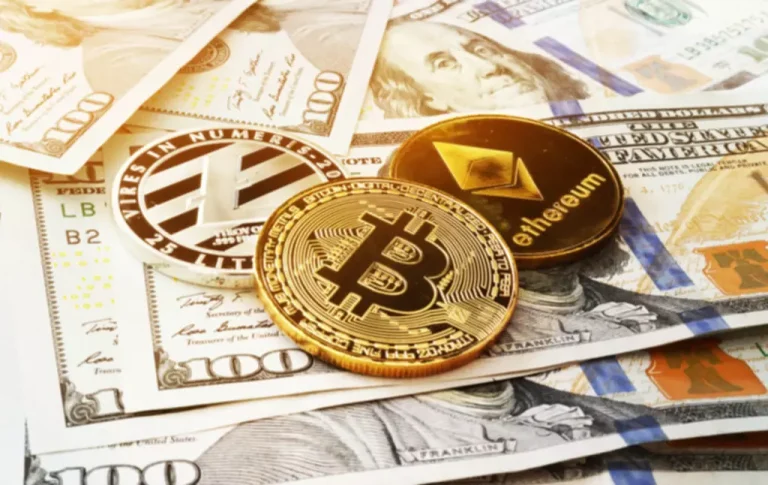Volume Definition What is Volume in Trading IG International
It is because as the volume of trade increases, price changes also tend to become more frequent. The first trader, X, purchases 100 shares of stock Alpha and sells 50 shares of stock Beta. The second trader, Y, buys 200 shares and sells 100 shares of the same stock, Gamma, to X. When considering volume while evaluating a particular stock, investors might want to assess how difficult it could be to dispose of their shares if they decide to sell. Different conclusions can usually be drawn from low trading volume.
It is calculated by adding or subtracting the trading volumes, depending on whether the closing price was higher or lower than the previous closing price. If the closing price is higher, the trading volume is added to the previous OBV. If the closing price is lower, the trading volume is subtracted from the previous OBV.
The further the price moves away from its average value, the less traders‘ activity and the greater the possibility of a reversal. Stock prices increased after the growth of buyers‘ activity and the forced closing of short trades by stop by sellers. All papers mentioned so far assume that agents have symmetric information about the asset payoff. Sspiral,10 is the moving sum of Sspiral for the last 10 days and captures the strength of the illiquidity spiral in terms of how long it is sustained for each individual stock. A value of –10 for Sspiral,10 indicates very liquid markets, whereas +10 indicates extremely poor liquidity.

Trading volume is a useful way of gauging trading momentum or continuous up or down price movements. IG accepts no responsibility for any use that may be made of these comments and for any consequences that result. Investors can usually find information about volume next to or below the stock chart provided by trading platforms or media sources, like Yahoo Finance or the Wall Street Journal.
What It Means When Stock Volume Goes Down
When a market is described as ‘active’ it indicates that the trading volume will be higher, and if the market is described as ‘inactive’, it means that the trading volume will be lower. The trading volume is usually higher when there is a significant price fluctuation in the market – this could be in response to news reports, company announcements, political announcements and so on. A breakout is a point at which changes in market trends occur. Changes in volume can clue investors into the strength of the breakout. Little change in volume suggests investors are paying the breakout little heed, while big changes in volume indicate a strong new trend. We’ve already seen that volume can help investors understand when a price trend is picking up steam.

On balance volume is a cumulative technical indicator in which volume is added on days when overall volume is up and subtracted on days when overall volume is down. The direction of the indicator is what is most important to investors. When price and OBV are moving up or down together, it is likely the trend will increase in strength. While volume is the number of shares that are being actively traded during a given period, float is the number of shares that are actually available to trade.
Learn first. Trade CFDs with virtual money.
The “Flippening” is the hypothetical moment when Ethereum will potentially surpass Bitcoin in terms of market capitalization. A buy wall is the result of a large buy limit order(s) placed on a cryptocurrency when it hits a certain price. Automated trading algorithms how to increase your brokerage trading volume are responsible for most buy walls. In conclusion, understanding volume can give you a more nuanced view of the market dynamics. So next time you dive into the ocean of investing, remember to check the volume-based temperature, not just the pricing tides.
After all, even seasoned sailors keep an eye on the weather report. Trading volume set a new record, which the exchange systems were unable to handle. Residents, Charles Schwab Hong Kong clients, Charles Schwab U.K. Volume tends to be highest near the market open and close and the start of the week and last day of the week. Thomas J Catalano is a CFP and Registered Investment Adviser with the state of South Carolina, where he launched his own financial advisory firm in 2018.
Uptrend accompanied by increasing volume
Consistent with the results of Manganelli (2005), we find that high trading intensity is related to high volatility, large trading volume, and narrow relative spread only for liquid stocks. This result indicates that intensive trading activity coincides with the involvement of informed traders who choose to exploit their information advantage in the frequently traded stocks. Infrequently traded stocks, however, seem to have different information transmission mechanisms.
While the stock’s price may continue to fall, traders who use volume analysis may start to follow the stock and watch for signs of a pickup supported by increasing volume. During downtrends and in sideways markets, a stock’s price will occasionally run into a support level, which is where downward trends tend to weaken as buying pressure overcomes selling pressure. When the price breaks below a support level, the breakdown is generally believed to be more significant if volume is high or above average. A breakout accompanied by low volume suggests enthusiasm is lacking. During uptrends and in sideways markets, a stock’s price will occasionally run into a resistance level—a point where upward trends start to fizzle as selling pressure overcomes buying pressure.
- As a rule, the average value for a fixed period of time (usually 90 days) is analyzed.
- This is because to buy an illiquid stock, investors will demand a higher return to compensate for the risk that they may not be able to easily sell the low-volume stock at a later date.
- For sellers, the lack of liquidity makes it harder to get out of a position as they may drive the price too low.
- If there’s a dramatic rise or fall in the average volume, it usually signifies that there has been some big news that has affected people’s views on the stock.
- They also notice that the trading volume was the highest that ABC stock had experienced over the past two years, and that the stock is continuing to trend higher.
With illiquidity driving volatility, investors need to stay patient to not drive the stock up above a price where they remain a buyer. For sellers, the lack of liquidity makes it harder to get out of a position as they may drive the price too low. For both buyers and sellers, sometimes the only opportunity to trade https://www.xcritical.in/ a position will be a news event that creates more liquidity for a short period of time. The On Balance Volume (OBV) indicator was developed by Joseph Granville in 1963. It is used to measure the flow of an asset’s trading volume to assess the balance of power between buyers and sellers in financial markets.
Downside breakout accompanied by heavy volume
Stocks with higher volumes have more investors interested in buying or selling them. The average volume of a security over a longer period of time is the total amount traded in that period, divided by the length of the period. Therefore, the unit of measurement for average volume is shares per unit of time, typically per trading day. Stocks aren’t as volatile when they have higher average daily trading volumes because much larger trades would have to take place to affect the price. In the Forex market, it is more difficult to calculate trading volumes since real data is unavailable here. The global Forex market is divided between the over-the-counter and futures currency exchanges, where derivatives (futures, options) are traded rather than currencies.
Spiral counts of 10 are rare, but can be observed in the data. Our results reveal the existence of two types of agents, informed and uninformed traders. In line with the empirical findings of Wong et al. (2009) who use nonlinear LACD model, our mixture LACD models do not exclude the presence of informed traders from trading in illiquid stocks.
This result does not support the assumption of Easley and O’Hara (1992) that informed agents only trade on the existence of new information. Therefore, the total trading volume appears to be a poor proxy for information flow. When a price change coincides with an increase in volumes, this indicates the activity of traders and the continuation of the trend.
Trading volume is also used to confirm the trend and reversal patterns. Trading volume measures the total amount of funds flowing in and out of either a specific cryptocurrency or the crypto market over a given period of time. It combines all successful trades on centralized and decentralized exchanges. It can be calculated for not only cryptocurrencies, but also other assets like stocks, bonds, and fiat currencies. Figure 29.2 presents the plots for frequency distribution for illiquidity spiral and loss spirals. For the loss spiral measures, note the bimodal nature of the distribution, which indicates that zero returns or unchanged prices are not as common as unchanged liquidity.
He shows that following a positive shock to the measure of sellers, market makers build up inventories, which they gradually unload to buyers. Market makers acquire the asset despite having lower valuation for it than other agents because they are more efficient in passing it to the buyers. Volume can also be used to determine when the market has gotten exhausted with the direction of a particular stock. When there’s a sharp change in the price and a sharp increase in volume, it suggests the trend could be ending. Investors who are afraid of missing out tend to buy high, resulting in a sharp increase in volume. However, when everyone has bought a stock, the security price often stagnates and then falls because the market has exhausted all buyers interested in the stock.
